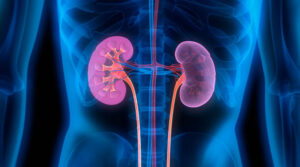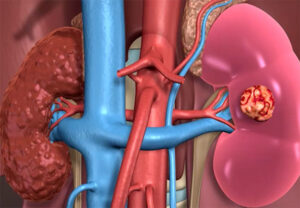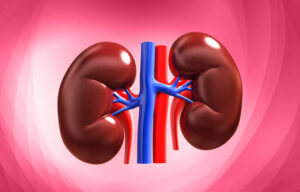15 Healthy Foods For People With Kidney Disease
According to the severity of kidney injury, there are varying dietary limitations.
End-stage renal disease (ESRD), often known as kidney failure, affects a person’s ability to do everyday tasks (6Trusted Source, 7Trusted Source).Your doctor will establish the optimal diet for you if you have kidney disease.

Most persons with severe renal disease should adhere to a kidney-friendly diet that reduces the volume of waste products in their blood.
The renal diet is a common name for this type of eating plan.
As a result, renal function is improved, and damage to the kidneys is minimized (8Trusted Source).
Nutritional limits for patients with kidney disease can vary, however, the following nutrients should be restricted from them:
• Sodium. Sodium is a common nutrient present in a wide variety of meals, including table salt. Damaged kidneys are unable to remove excess salt from the bloodstream, resulting in an increase in sodium levels in the blood. Every day, it’s recommended to keep sodium intake below 2,000 milligrams (mg) (9Trusted Source, 10Trusted Source).
• Potassium. People with kidney illness must keep their potassium intake under control to avoid dangerously high blood levels. In general, potassium intake should be kept below 2,000 mg per day.
• Phosphorus. The mineral phosphorus, which is present in many meals, cannot be excreted by damaged kidneys. To avoid harmful effects, phosphorus intake should be limited to 800–1,000 mg per day for the majority of individuals.
In persons with renal disease, protein is another nutrient that may need to be restricted because damaged kidneys are unable to remove waste products from the breakdown of protein. End-stage renal disease sufferers on dialysis, which filters and cleans the blood, have higher protein requirements than those who are not on dialysis (15Trusted Source, 16Trusted Source).
The dietary needs of each kidney disease patient are unique, which is why it’s crucial to consult your healthcare specialist. It’s good to know that there are a lot of tasty and healthy options that are low in phosphorus, potassium, and salt.
Below are the 15 healthy food kidney disease patients
1. The Cauliflower
The vitamins C, K, and folate all abound in cauliflower, making it a healthy addition to any diet. It’s loaded with anti-inflammatory chemicals like indoles and provides a significant amount of fiber as well (17Trusted Source).
Aside from that, mashed cauliflower can be used as a low-potassium side dish.
Cauliflower, when cooked, contains a total of 18Trusted Sources like sodium, potassium, and phosphorus.
2. Blueberries
Blueberries are an excellent source of antioxidants and a nutrient-dense food (19Trusted Source).
They include anthocyanins, which have been shown to protect against cardiovascular disease, malignancies of the throat and mouth, cognitive decline, and type 2 diabetes (20).
Because of their minimal salt, phosphorus, and potassium content, they’re an excellent complement to a kidney-friendly diet.
3. Sea bas
Omega-3 fatty acids, which are found in sea bass, are extremely beneficial to health.
Anti-inflammatory properties of omega-3 fatty acids can lessen the risk of cognitive decline, depression, and anxiety by reducing the inflammation in the body (22Trusted Source, 23Trusted Source, 24Trusted Source).
Sea bass has a lower phosphorus content than other seafood, even though all fish are high in phosphorus. If you want to keep your phosphorous levels in check, you’ll need to eat only small amounts.
4. Red grapes
Not only do red grapes taste great, but they’re also packed with nutrients. They’re loaded with vitamin C and contain anti-inflammatory antioxidants called flavonoids (26Trusted Source).
The flavonoid resveratrol, found in red grapes, has been demonstrated to protect against diabetes and cognitive decline, as well as improve cardiovascular health (27Trusted Source, 28Trusted Source).
Half-cup 5 grams) of these sugary fruits has (29Trusted Source):
Amounts of sodium, potassium, phosphorus, and calcium:
5. Whites eggs
whites Eggs are a preferable option for those on a renal diet because of their lower phosphorus content than egg yolks. Whites Eggs are an excellent source of high-quality protein that is very gentle on the kidneys.
They’re also a great option for patients undergoing dialysis, who require more protein but must keep their phosphorus intake in check. Thirty grams of egg whites can be found in two big eggs.
Amounts of sodium: 110 mg
Phosphorus 10 mg potassium
6. Garlic
People with renal disease are recommended to reduce their intake of sodium, which includes added salt.
When used in place of salt, garlic is a flavorful and nutrient-dense addition to meals.
Manganese, vitamin C, and vitamin B6 are all found in abundance, as are sulfur compounds, which have been shown to have anti-inflammatory effects.
7. Buckwheat
Buckwheat is an exception to the rule when it comes to whole grains being high in phosphorus.
The B vitamins, magnesium, iron, and fiber found in buckwheat make it an excellent source of nutrition.
Buckwheat is also a gluten-free grain, so it’s a wonderful option for those who have celiac disease or gluten sensitivity.
8. Olive oil
People with renal illness can use olive oil since it is low in phosphorus and high in monounsaturated fats.
Olive oil, which is high in calories, is essential for persons with advanced kidney disease since they often struggle to gain weight. Most of the olive oil’s fat is oleic acid, a monounsaturated lipid that has anti-inflammatory qualities (34Trusted Source).
Olive oil’s monounsaturated fats can withstand high heat, making it a good option for preparing food.
Olive oil contains (35Trusted Source): one tablespoon (13.5 grams)
(0.03 mg sodium, 0.1 mg potassium, and 0 mg of phosphorus)
9. bulgur.
Whole grain wheat product bulgur is a wonderful, kidney-friendly alternative to other whole grains that are high in phosphorus and potassium. ”
These minerals and vitamins can be found in abundance in this hearty grain.
Plant-based protein and fiber, which is essential for digestive health, are also found in this food.
Bulgur includes the following nutrients in a half-cup portion (91 grams):
(4.45 mg) of sodium
This serving provides an adequate supply of both potassium and phosphorus.
10. Cabbage
Cabbage is a member of the cruciferous vegetable family and a powerhouse of nutrients.
Vitamin K, vitamin C, and several B vitamins are all found in abundance in this food.
This type of fiber helps maintain a healthy digestive tract by supporting regular bowel movements and increasing the size of your stool (37Trusted Source).
As an added benefit, it’s low in sodium and potassium. One cup (70 grams) of finely shredded cabbage has only
11. Chicken skinless ones
Some people with renal problems may need to reduce their protein consumption, but providing their bodies with adequate amounts of high-quality protein is essential for overall health.
Phosphorus, potassium, and sodium concentrations in skinless chicken breasts are lower than in skin-on versions.
Avoid pre-cooked roasted chicken, which is high in sodium and phosphorus, when purchasing chicken.
the following nutrients can be found in a serving of skinless chicken breast:
Sodium, potassium, phosphorus.
12. Belk peppers
Contrary to the majority of vegetables, bell peppers have a low potassium content despite their high nutritional content.
Vitamin C is a potent antioxidant found in these brilliantly colored peppers.
You can get the recommended amount of vitamin C in just one red bell pepper (74 grams).
As a bonus, they’re filled with immune-boosting vitamin A, which renal disease patients frequently lack.
13. Onions
Renal-diet foods benefit greatly from the flavorful addition of onions, which are low in sodium.
SThe salt reduction is difficult, so finding tasty salt substitutes is essential. Garlic and olive oil give flavor to foods without harming your kidneys when sautéed together with onions.
Onions include prebiotic fibers and a high concentration of vitamins C, manganese, and B, all of which help keep your digestive system healthy by feeding good bacteria.
14. Pineapple
The potassium content of many tropical fruits, such as oranges, bananas, and kiwis, is very high.
A low-sodium, sugary option for folks with kidney issues is pineapple.
Pineapple is also a good source of fiber, manganese, vitamin C, and bromelain, an enzyme that reduces inflammation in the body (51Trusted Source).
15. The Shiitake mushroom
If you are on a renal diet and need to limit your protein intake, shiitake mushrooms are an excellent meat substitute.
B vitamins, copper, manganese, and selenium are all abundant in these foods.
The plant-based protein and dietary fiber they contain also make them an excellent source of nutrition.
Portobello and white button mushrooms are high in potassium, while shiitakes are a better option for individuals on a renal diet because they are lower in potassium.
In conclusion
If you’re on a renal diet, you should eat the kidney-friendly food listed above.
It’s always a good idea to consult with your doctor or nutritionist before making any major changes to your diet.
Depending on the type and extent of kidney impairment, as well as the medical interventions in place, such as medication or dialysis treatment, dietary limitations might be quite different.
Even though a renal diet can be limiting at times, many delectable foods fit into a healthy, well-balanced, kidney-friendly diet.






